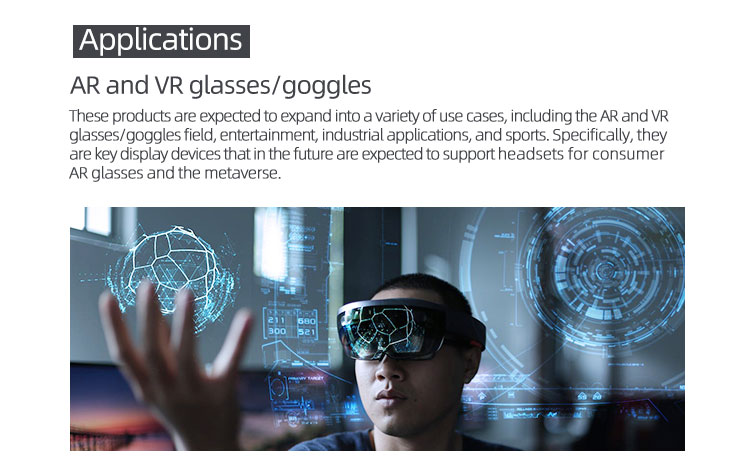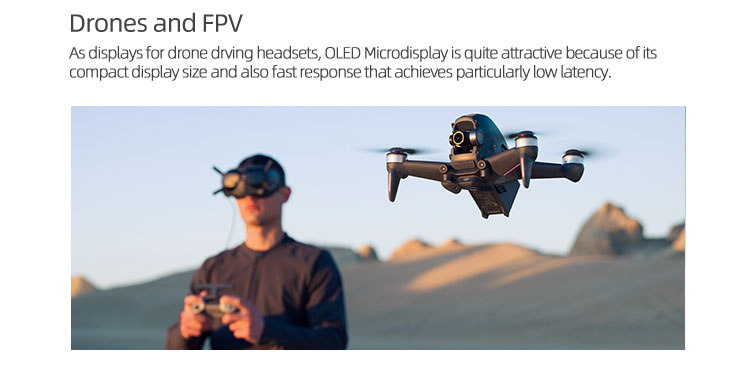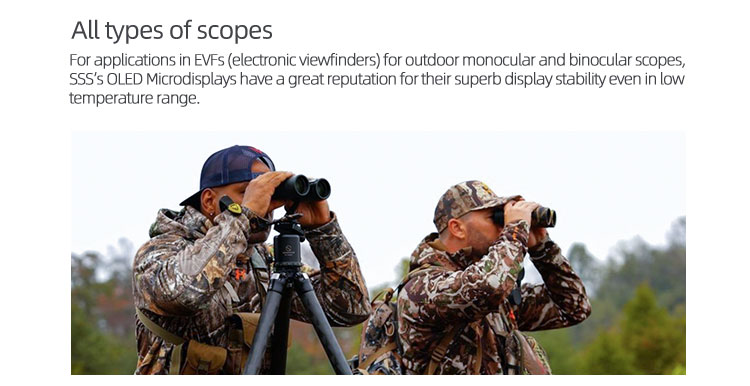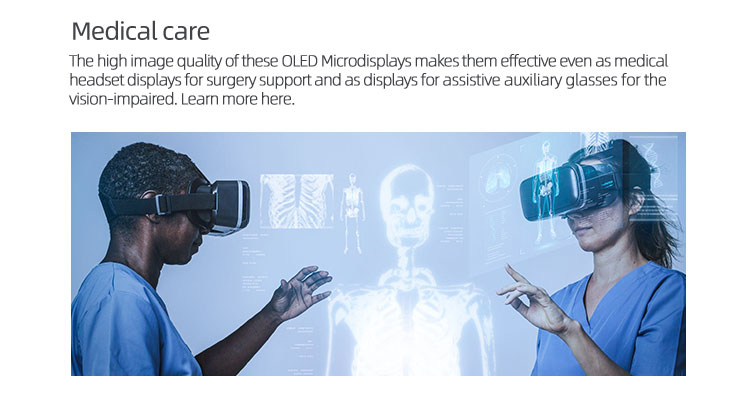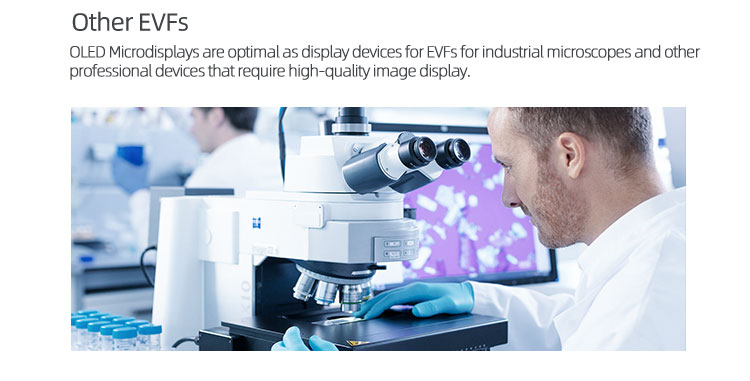Microdisplays are tiny, high-resolution display panels that are typically used in applications where space is limited, and the display needs to be compact but capable of producing sharp, high-quality images. These displays are often found in devices like head-mounted displays (HMDs), smart glasses, cameras, and other miniaturized technologies.
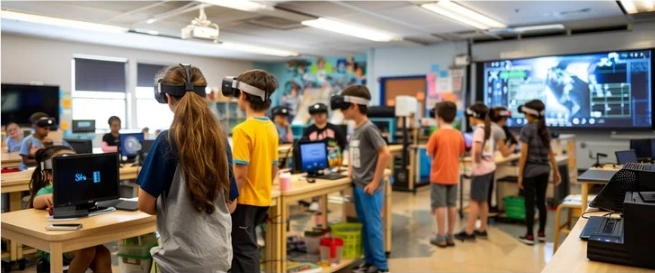
Here’s a closer look at microdisplays:
Key Characteristics of Microdisplays:
Size:
Microdisplays are smaller than traditional displays, typically measuring anywhere from 0.2 inches to 1 inch diagonally. Their tiny size allows them to be used in devices where space is at a premium.
High Resolution:
Despite their small size, microdisplays often have high resolution relative to their size, making them suitable for high-definition viewing. They can deliver pixel densities well above those of regular displays, often in the range of several hundred pixels per inch (PPI), allowing for sharp and clear visuals.
Compact and Lightweight:
Due to their small footprint, microdisplays are lightweight, which makes them ideal for portable and wearable technologies, such as augmented reality (AR) headsets and virtual reality (VR) headsets.
Applications:
Microdisplays are used in devices where traditional displays wouldn’t fit or would be impractical due to space or weight constraints.
Types of Microdisplays:
LCD Microdisplays:
1. These use liquid crystal technology and often have LED backlighting. They are widely used in compact electronic devices like cameras and portable projectors.
2. Example: Sony’s EVF (Electronic Viewfinder) in digital cameras uses an LCD microdisplay.
OLED Microdisplays:
1. These use organic light-emitting diodes (OLEDs), where each pixel emits light individually. OLED microdisplays tend to offer better contrast, brighter colors, and faster refresh rates compared to their LCD counterparts.
2. Example: OLED microdisplays are commonly used in high-end virtual reality (VR) and augmented reality (AR) headsets because of their superior image quality.
LCoS (Liquid Crystal on Silicon) Microdisplays:
1. LCoS is another technology used in microdisplays, which involves liquid crystals placed on a reflective silicon substrate. These displays are commonly used in projectors and some high-end AR glasses.
2. Example: Some head-up displays (HUDs) and portable projectors use LCoS microdisplays for their ability to produce clear images in a small form factor.
DLP (Digital Light Processing) Microdisplays:
1. DLP microdisplays use tiny mirrors to reflect light and project an image. They are most commonly used in mini projectors, digital cinema projectors, and some optical devices.
2. Example: DLP-based microdisplays are used in pico projectors and other compact projection technologies.
Common Applications of Microdisplays:
Augmented Reality (AR) and Virtual Reality (VR) Headsets:
1. In AR and VR headsets, microdisplays are used for the screens seen by the user. Their small size and high resolution are ideal for providing sharp, immersive visuals in close proximity to the eyes.
2. Example: AR glasses like Google Glass or Microsoft HoloLens use microdisplays to project digital information into the user’s field of view.
Wearables:
1. Microdisplays are used in smart glasses and other wearable devices, allowing users to see notifications or data without needing to look at a larger screen.
2. Example: Smartwatches or fitness trackers may use a small microdisplay to show time, health data, and messages.
Head-Up Displays (HUDs):
1. In automotive HUDs, aviation displays, and even military applications, microdisplays are used to project important data (speed, navigation, or status information) onto a transparent screen or directly onto the windshield.
2. Example: Modern cars, like BMW or Mercedes-Benz, use microdisplays to show navigation and speed info on the windshield.
Cameras and Viewfinders:
1. Microdisplays are often used in electronic viewfinders (EVFs) of digital cameras and camcorders. These provide a high-resolution preview of the scene being captured, giving photographers a clear view for composing shots.
2. Example: High-end digital SLR cameras and mirrorless cameras use microdisplays in their viewfinders.
Portable Projectors:
1. Microdisplays are key components in pico projectors and other small-form projectors, which need high resolution in a tiny, portable package.
2. Example: Mini projectors like the Anker Nebula Capsule or Kodak Luma use microdisplays for compact projection in a pocket-sized device.
Smart Glasses:
1. Microdisplays are used in smart eyewear to provide heads-up information without obstructing the user’s view of the real world. These can display navigation, notifications, or other contextual information directly in the user’s line of sight.
2. Example: Vuzix Blade or North Focals smart glasses use microdisplays to project data to the wearer’s eyes.
Medical Devices:
1. In surgical microscopes or medical imaging devices, microdisplays can be used for high-resolution, detailed visualizations that need to be very compact for portability or integration into the device.
2. Example: Medical diagnostic tools like portable ultrasound machines may use microdisplays to show patient information or scan results.
Telescope and Night Vision Equipment:
1. Some telescope or night vision goggles use microdisplays to provide clear images in low-light conditions.
2. Example: Military-grade night vision goggles and binoculars may use microdisplays to provide real-time data or enhanced views.
Advantages of Microdisplays:
· Small Size: Their compactness makes them ideal for portable and wearable devices.
· High Resolution: Microdisplays can deliver sharp, crisp images with high pixel density despite their small size.
· Low Power Consumption: Microdisplays typically consume less power, which is crucial for battery-operated devices like wearables.
· Flexibility: Microdisplays can be used in a wide range of devices, from consumer electronics to professional and military equipment.
Disadvantages of Microdisplays:
· Cost: The manufacturing process for microdisplays, especially high-resolution OLED or LCoS models, can be expensive.
· Limited Size: While they are perfect for small devices, they aren’t suitable for large-format displays or devices that require larger screens.
· Complexity: Some types of microdisplays, like LCoS or DLP, can be more complex to produce and calibrate, which can increase costs.
In summary, microdisplays are small, high-resolution displays used in a variety of compact or wearable devices where size and power efficiency are crucial. Whether for AR/VR headsets, smart glasses, or portable projectors, they offer a combination of high-quality visuals and small form factors, making them invaluable for cutting-edge technologies.
